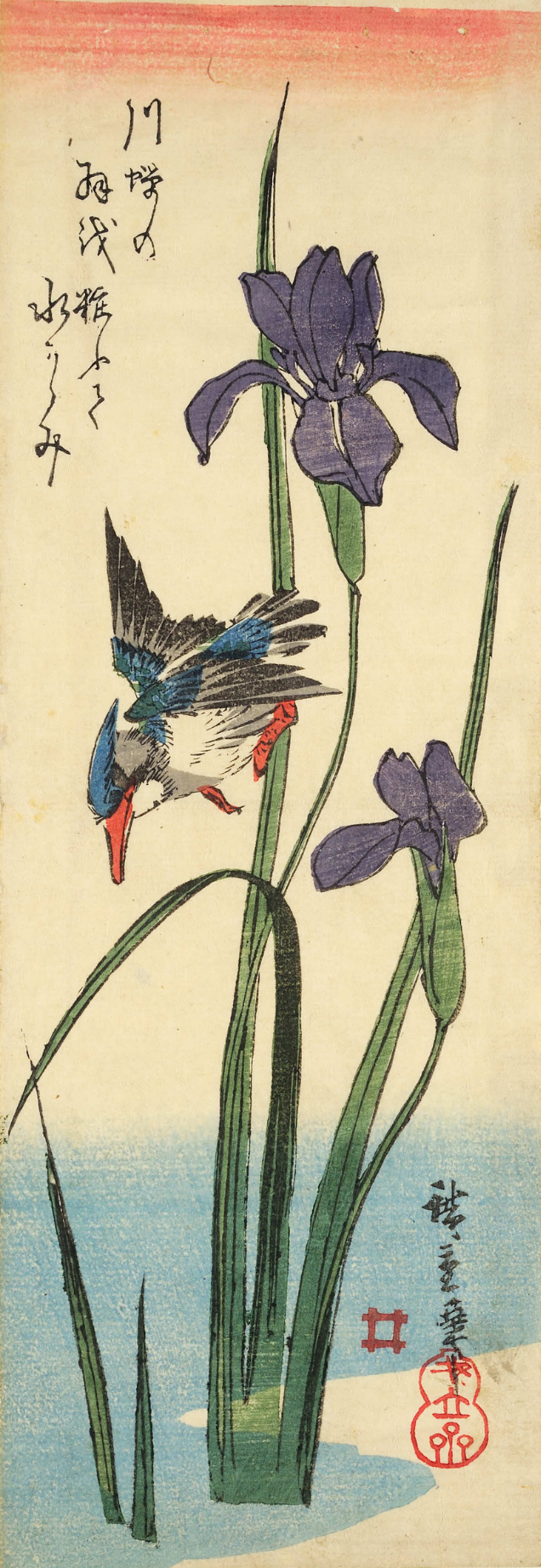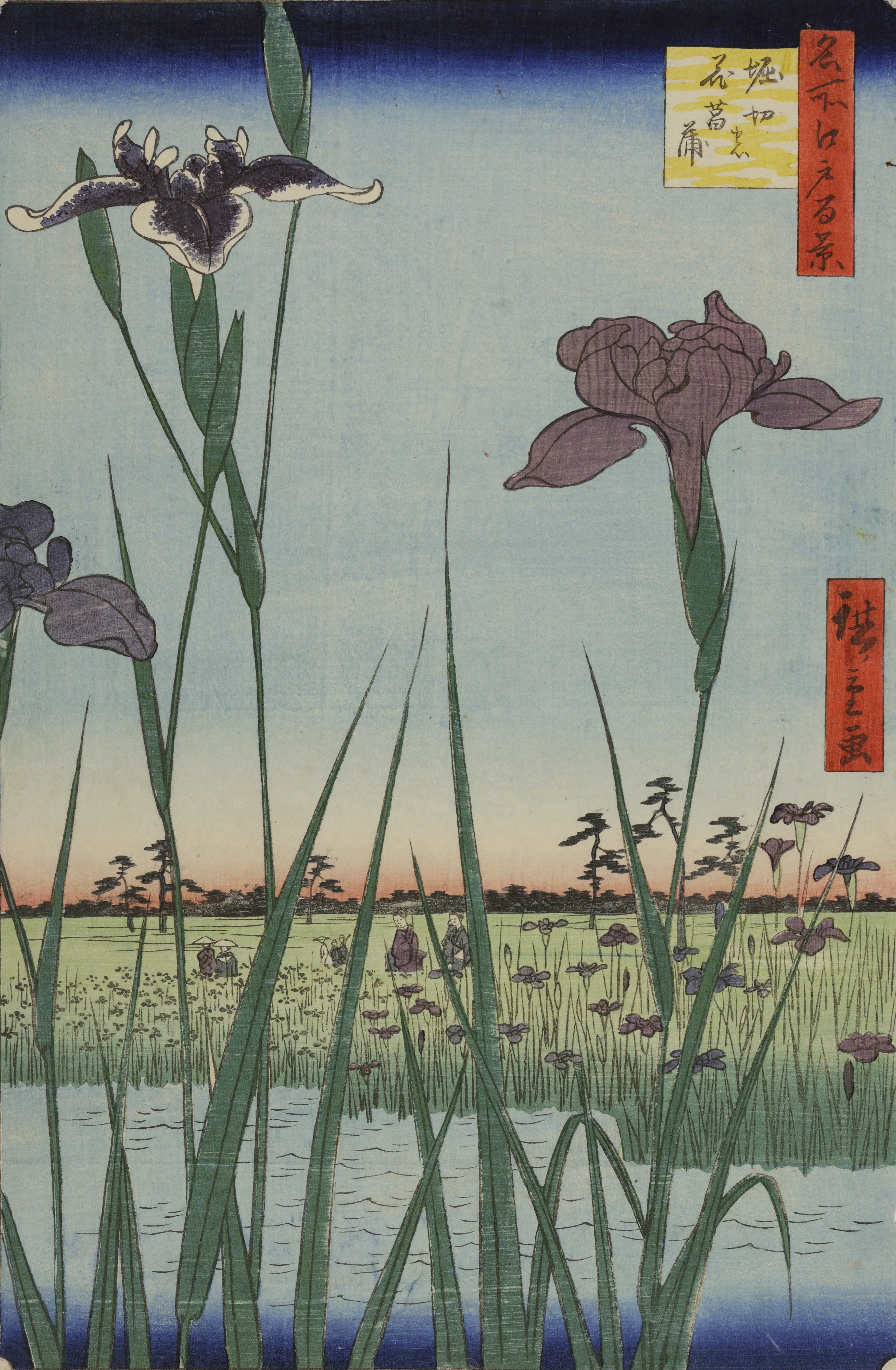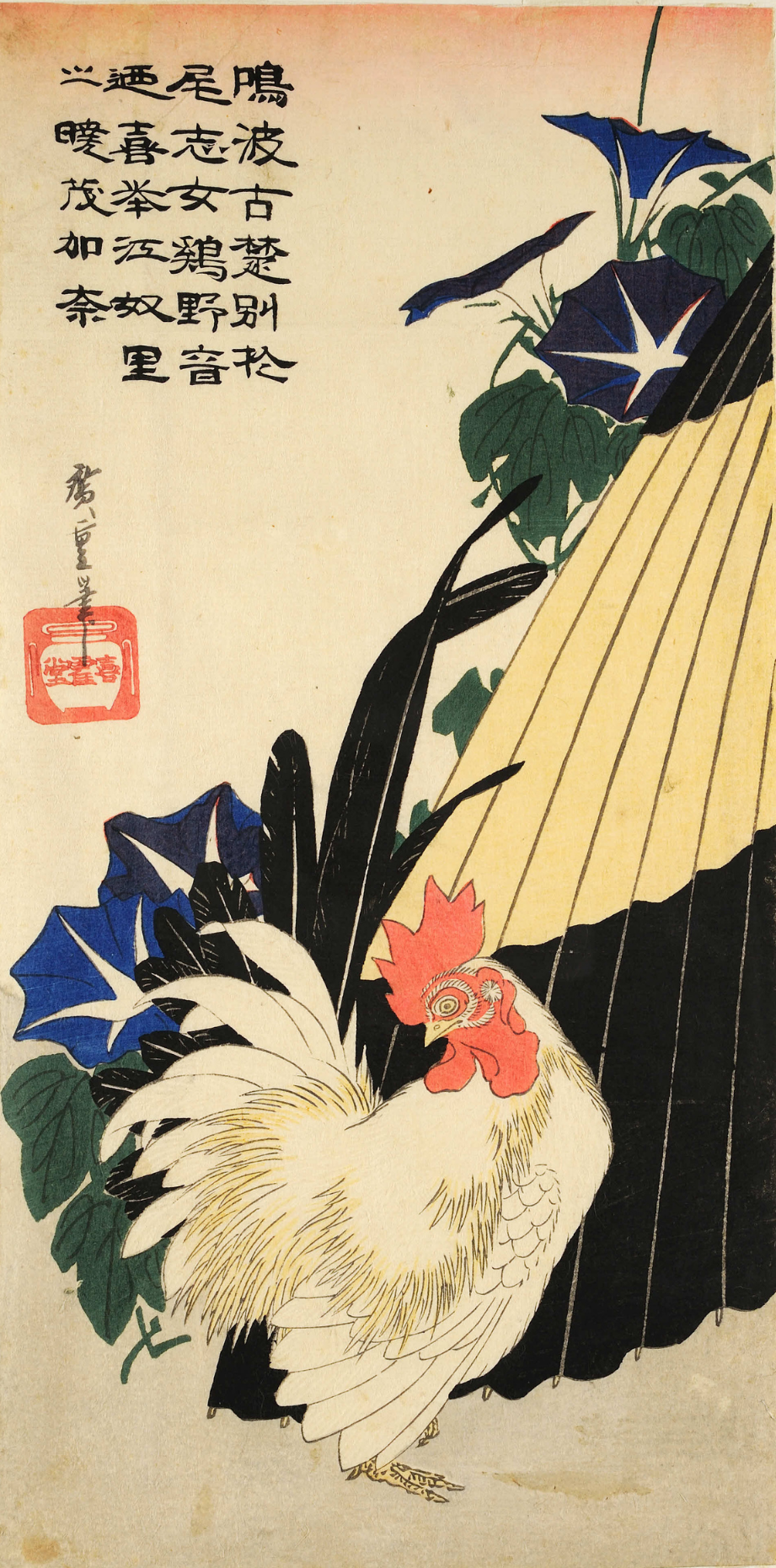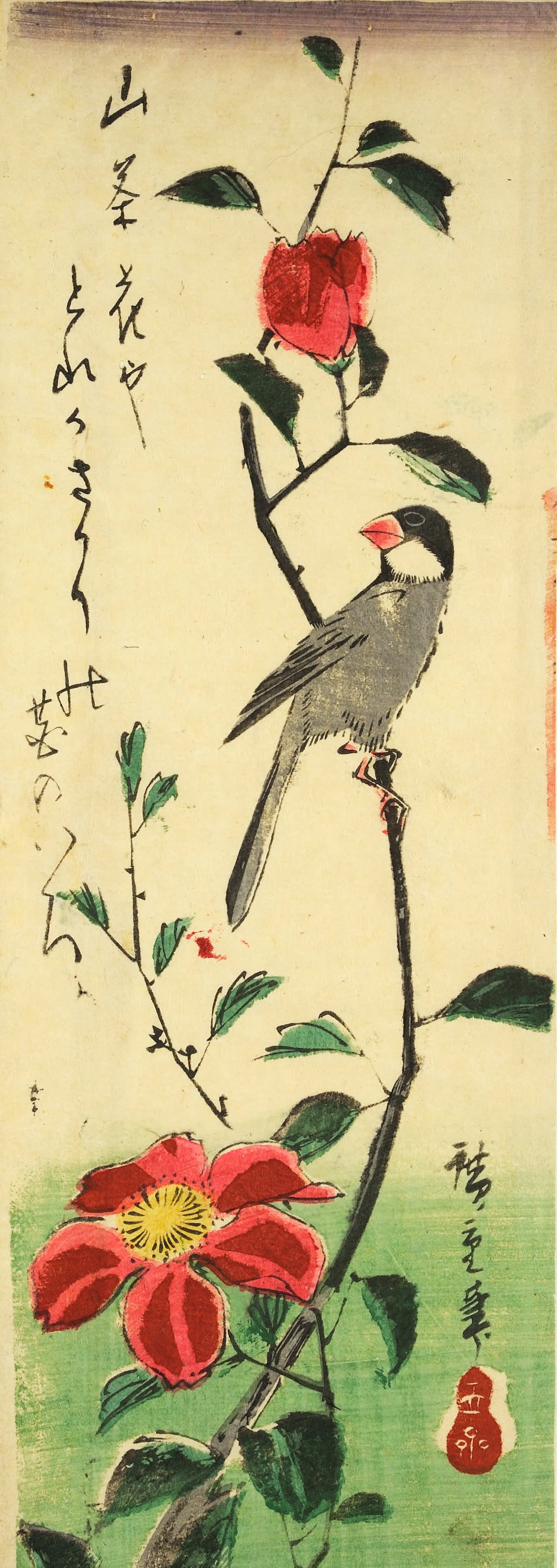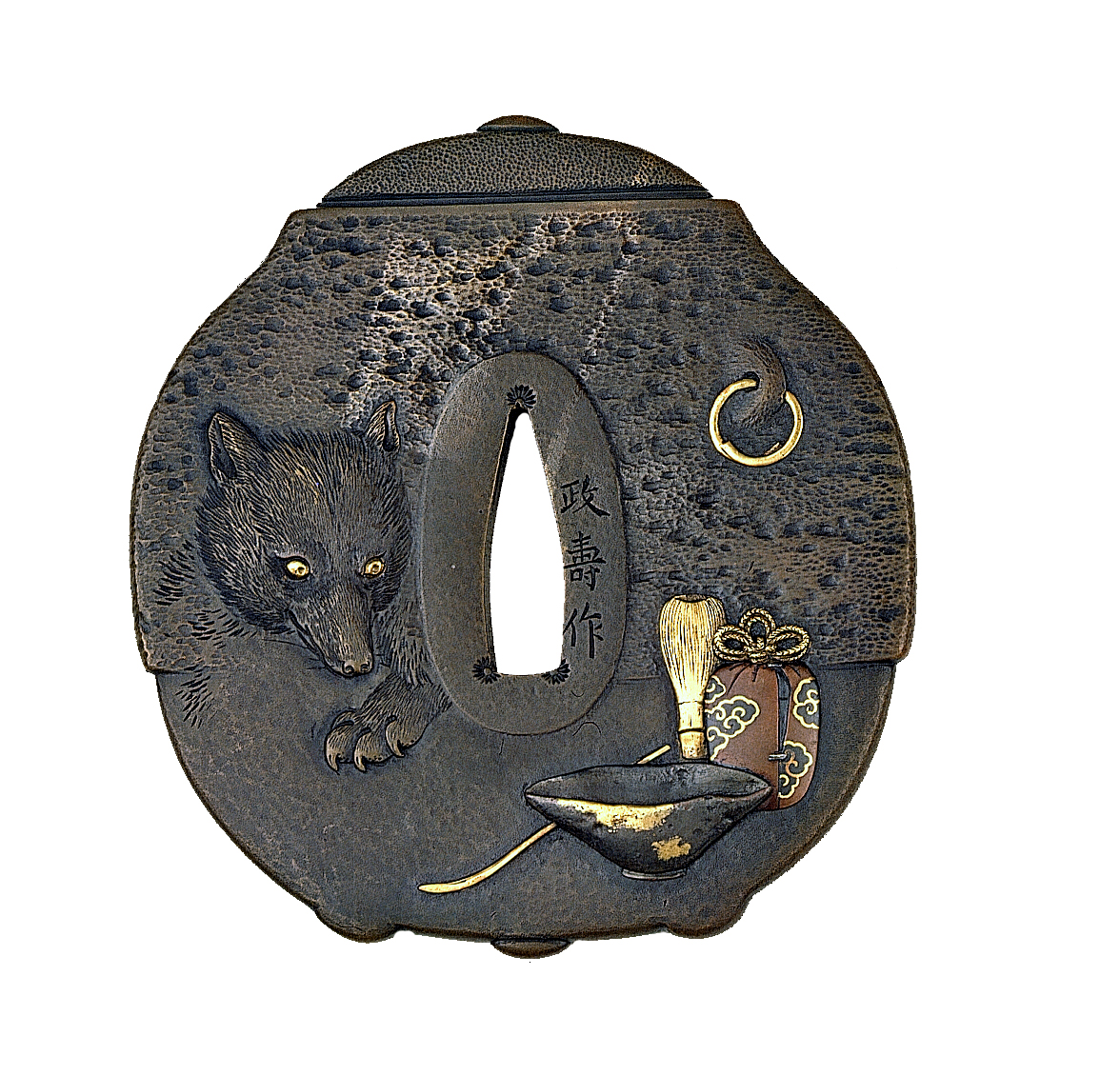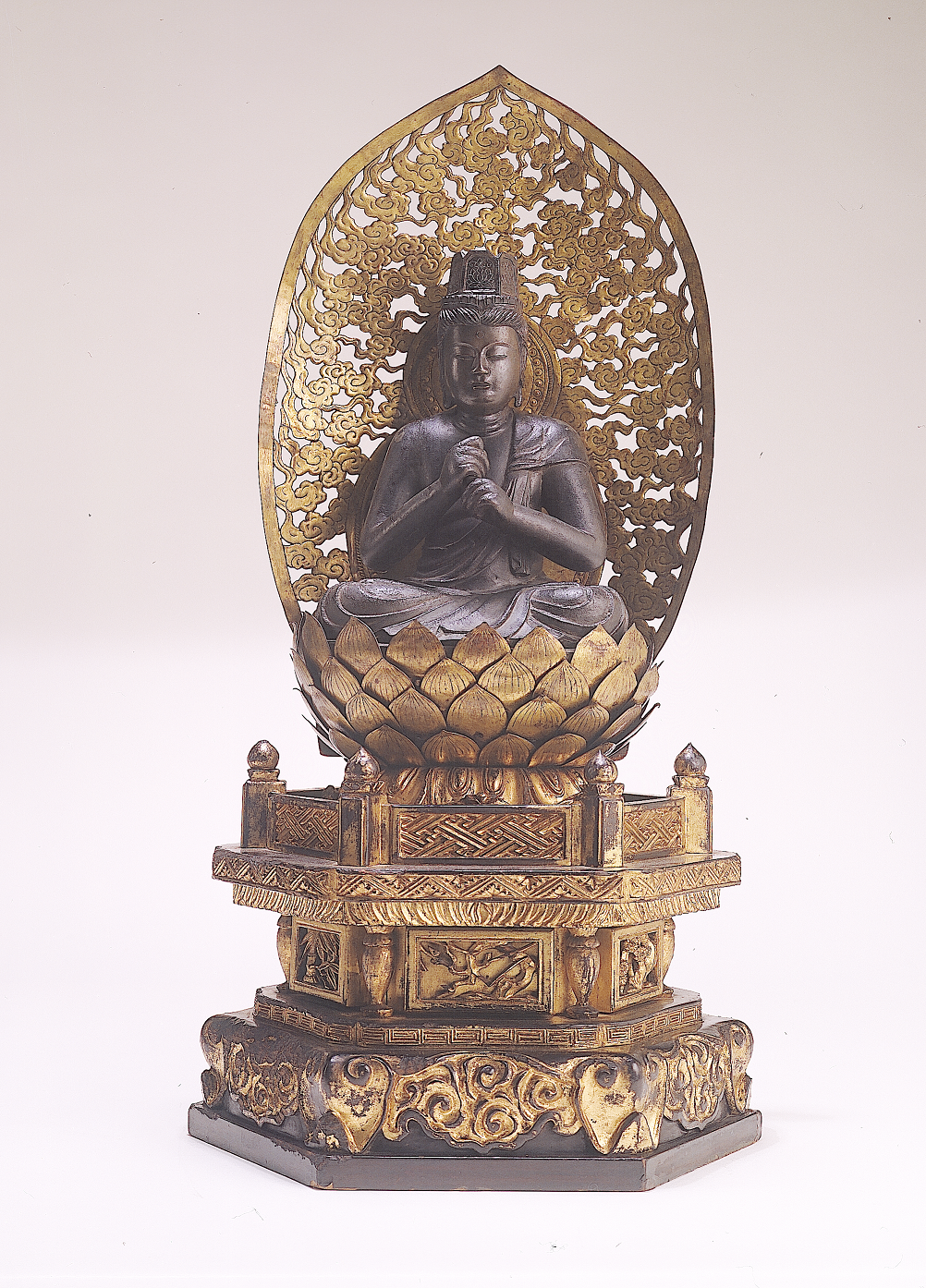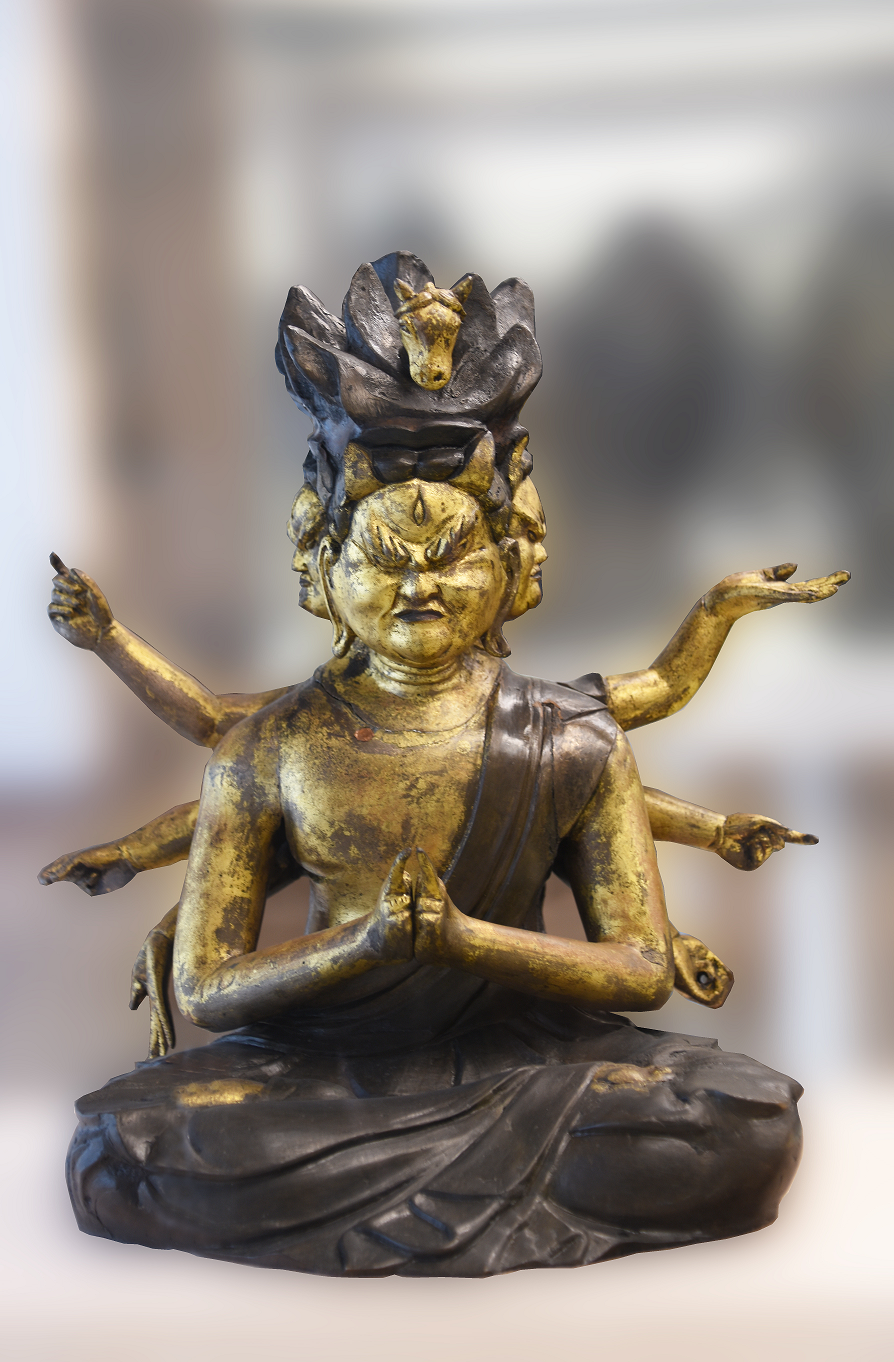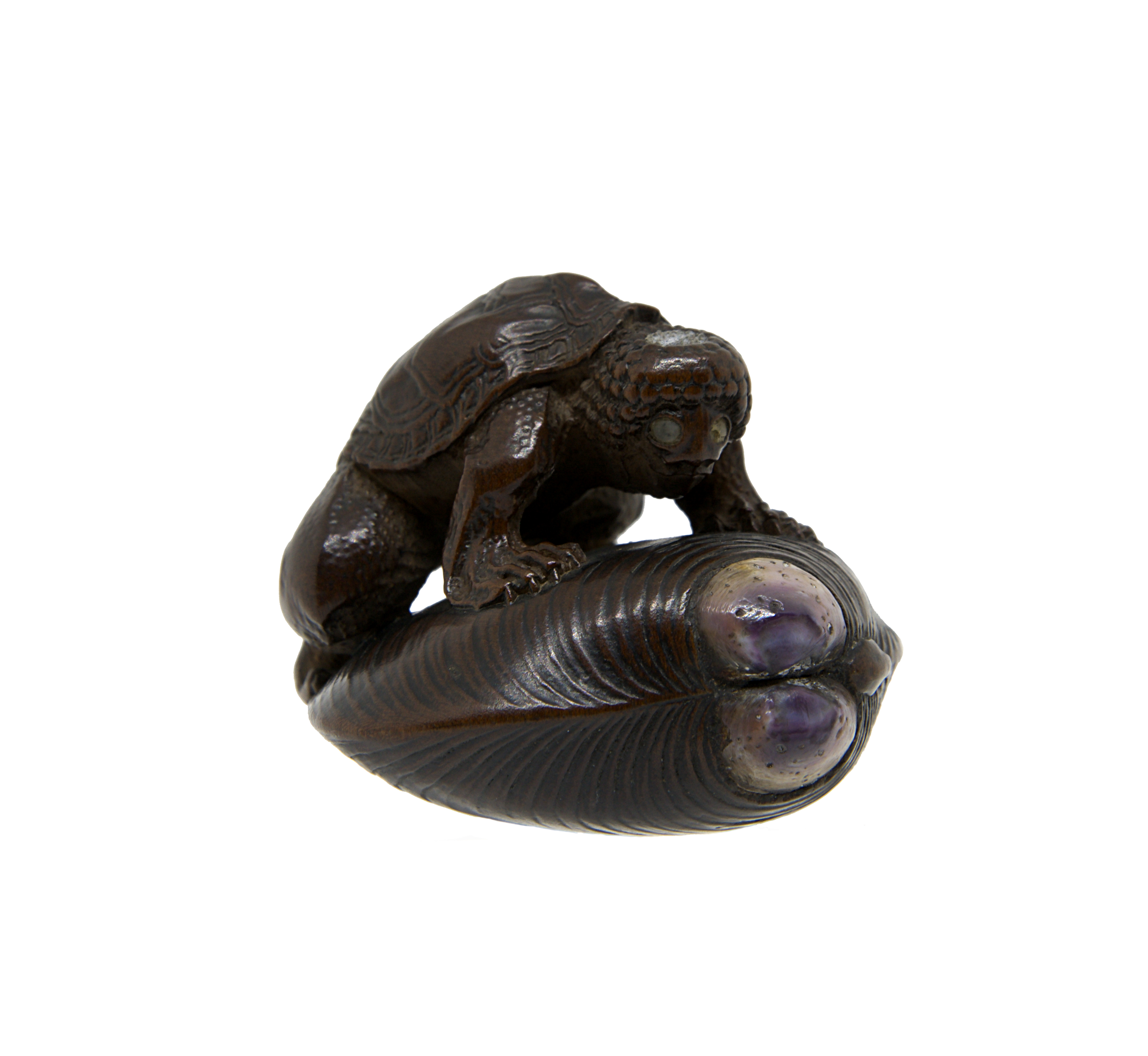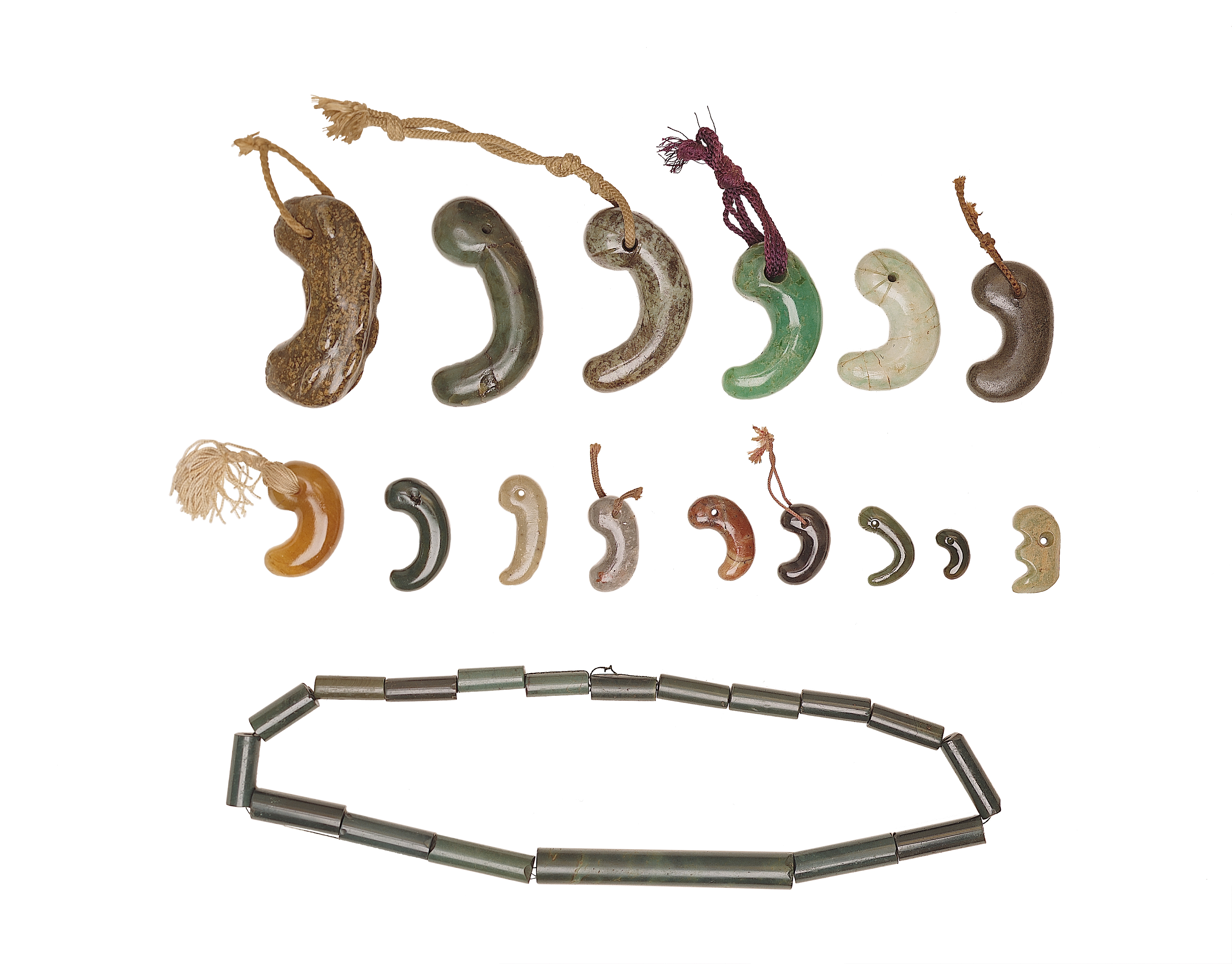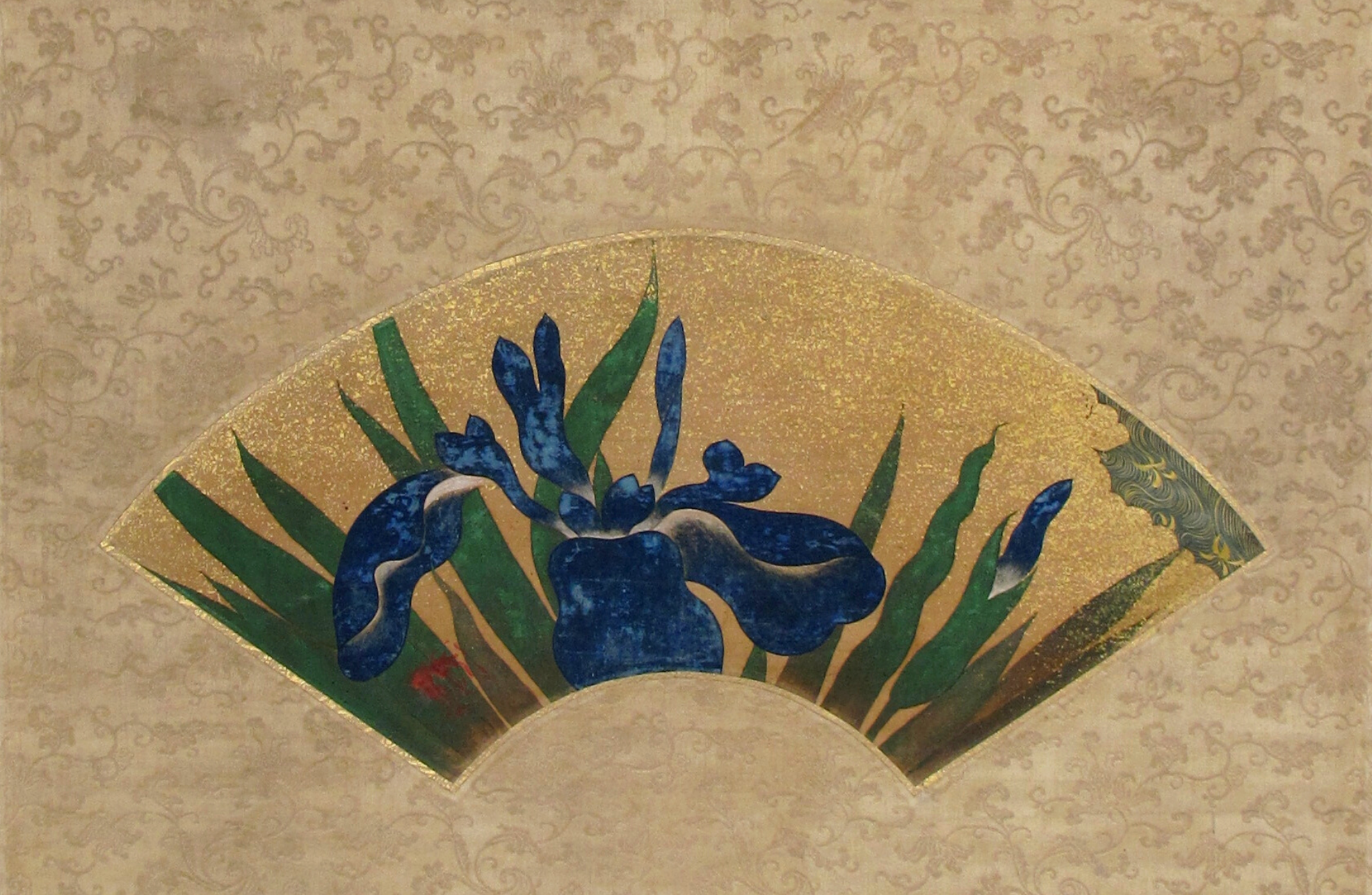
Click here to view image
Otaga Korin, Rinpa School, Japan, Edo period (1603-1868)
Fan in kekejiku format, ink, colours and gold on paper
In storage (inv. no. P-275)
Edoardo Chiossone Collection, testamentary bequest, 1898
Fan
The iris kakitsubata (杜若) stands out for its beautiful purple flowers with shades tending to blue. The falling sepals recall the ears of a rabbit and are mottled with white. Its leaves, resembling swords, can reach up to 70 cm. The kakitsubata blooms in the springtime.
This is a fan painted on paper, mounted like a kakemono (a roll to hang), datable 1711-1736. The blue irises are placed on a golden background, to show their preciousness: the background is an ocher cloud, sprinkled with crumbs of gold leaf; we perceive the limit of the cloud only at the right end, where we see a bluish-green pond. In it we can see some slight streaks that refer to golden spirals, on which the iris grows. These petals and leaves are outlined with a fine brush dipped on black ink. Moreover, Kōrin opts for a close-up of a fully open kakitsubata, whose falling sepals suggest an already advanced flowering, in contrast to the flower still in bud on the right.

